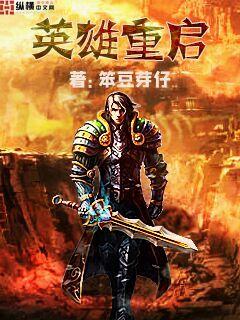
韩国足球队成功的关键之一。主帅通过一系列措施加强了球队的团结和凝聚力。
首先,主帅重视团队建设,定期组织团队活动,增进队员之间的了解和信任,营造了和谐的团队氛围。
其次,主帅注重心理辅导,帮助球员克服困难和压力,保持良好的心态,在关键时刻保持冷静和集中。
最后,主帅激励球员为团队荣誉而战,树立了团队荣誉感和使命感,使每个球员都能为团队奉献出最大的努力。
这些措施有效地增强了球队的凝聚力和战斗力,为球队取得成功打下了坚实基础。
**总结:
**韩国足球队的主帅通过战术变革和团队建设取得了巨大成功。他们不断调整战术理念,创新训练方法,提升球员素质,加强团队凝聚力,使球队在国际赛场上屡创佳绩。随着主帅的不断努力和球队整体实力的提升,韩国足球队有望在未来取得更加辉煌的成绩。
### 文章摘要
Arsenal球员球衣历史与设计探索从球队成立至今,其球衣设计不仅反映了时代变迁与足球文化的演变,更彰显了俱乐部的身份认同与创新精神。本文将从经典设计、技术革新、赞助商影响以及未来趋势四个方面深入探讨,揭示Arsenal球衣在视觉与技术上的发展轨迹,并分析其对球迷和足球文化的深远影响。
从1920年代的经典红白色条纹到1970年代的独特领口设计,Arsenal球衣承载了丰富的历史文化。每一个设计元素都反映了当时的时代特征与足球风格,例如...
在1980年代至2000年代的变迁中,球衣设计逐渐走向简约主义,体现出Arsenal传统与现代足球审美的完美结合。
最近几个赛季,Arsenal球衣设计回归经典,重新演绎历史元素,以致敬过往并迎接未来。
球衣材料从棉质到现代合成纤维的革新,使得Arsenal球员在比赛中能够享受更高的舒适度和性能。材料科技的进步不仅提升了球员的表现,也改善了球衣的耐用性和透气性。
随着科技的发展,虚拟现实和增强现实技术开始应用于球衣设计过程中,为设计师提供了前所未有的创作空间。
这些技术的运用,不仅提高了球衣的实用性,也拓展了设计的创新可能性,为Arsenal球衣的未来发展开辟了新的道路。
赞助商在Arsenal球衣设计中的角色越来越重要。从Puma到Adidas再到现在的Nike,每一次赞助商的更换都带来了球衣设计风格上的显著变化。
赞助商不仅在设计过程中提供资金支持,还通过品牌影响力和全球市场的推广,使得Arsenal球衣在全球范围内成为了时尚与运动的符号。
同时,赞助商的变动也反映了足球商业化进程中品牌合作的重要性和复杂性。
未来,Arsenal球衣设计将继续面临新的挑战和机遇。随着可持续发展理念的兴起,球衣设计将更加关注环保材料和生产工艺。
个性化定制将成为未来设计的重要方向,球迷将有机会参与到球衣设计的过程中,增强他们的归属感和参与感。
同时,技术创新将继续推动球衣设计的边界,虚拟现实和智能材料的应用可能会重新定义Arsenal球衣的未来形态。
总结:
Arsenal球员球衣历史与设计探索不仅是对俱乐部文化的重要回顾,也展示了足球装备在技术与设计上的不断进步。通过经典设计的传承、技术革新的推动、赞助商的影响以及未来趋势的展望,我们可以看到Arsenal球衣设计背后的深厚文化底蕴和无限创新可能性。
未来,随着足球和设计技术的进一步发展,Arsenal球衣将继续在世界足坛上扮演重要角色,不断演绎其独特的设计语言和品牌价值。
Certainly! Here's the structured article about S. Devrij, a Dutch defender, focusing on his football career and technical style.
**Article Abstract:**
Stefan de Vrij, renowned for his defensive prowess and tactical acumen, exemplifies the modern Dutch defender. From his formative years to international acclaim, his journey unfolds through a blend of strategic insight, defensive resilience, and leadership on the field. This article delves into his career trajectory, technical attributes, tactical impact, and the broader influence of his playing style within contemporary football.
---
Stefan de Vrij's early years in football laid the foundation for his future success. Born in Ouderkerk aan den IJssel, Netherlands, on February 5, 1992, he displayed promise from a young age. He joined the youth academy of Feyenoord Rotterdam, where his defensive abilities quickly stood out. De Vrij's positional awareness and composure under pressure were evident even in his formative years, attributes that would define his career.
His progression through Feyenoord's ranks was marked by consistent improvement in both technical skills and tactical understanding. By the time he made his first-team debut in 2009, he had already established himself as a reliable central defender. De Vrij's ability to read the game and initiate attacks from the backline showcased his versatility beyond defensive duties.
As he continued to mature, De Vrij became a pivotal figure in Feyenoord's resurgence in Dutch football. His leadership qualities began to shine through, earning him the captain's armband at a young age. This period not only solidified his status as one of the top defenders in Eredivisie but also caught the attention of European clubs scouting for defensive talent.
De Vrij's technical prowess as a defender sets him apart in contemporary football. His exceptional ability to time tackles and interceptions with precision reflects his astute reading of the game. Known for his aerial dominance and strong positional play, he combines physicality with tactical intelligence seamlessly.
His passing accuracy and distribution from the backline are crucial in building play from defense to attack. De Vrij's proficiency in initiating attacks through long balls and short, incisive passes adds a dynamic dimension to his defensive role. This technical finesse not only stabilizes his team defensively but also contributes significantly to offensive transitions.
Moreover, his adaptability across different defensive systems highlights his versatility. Whether operating in a back four or three, De Vrij's understanding of defensive lines and covering spaces remains consistent, a testament to his tactical flexibility and football IQ.
De Vrij's tactical impact extends beyond his individual contributions. His ability to organize and communicate effectively on the field enhances defensive cohesion. His leadership qualities, honed over years of experience, guide younger teammates and influence team strategies during matches.
Within the Netherlands national team setup, De Vrij's presence has been instrumental. His performances in major tournaments such as the UEFA European Championship and FIFA World Cup underline his ability to thrive under pressure. His partnership with other defenders and coordination with the goalkeeper exemplify his role as a defensive linchpin.
Off the ball, De Vrij's anticipation and reading of opposition movements allow him to neutralize threats effectively. His awareness of defensive transitions and quick decision-making contribute to his team's overall defensive solidity.
Stefan de Vrij's career trajectory and technical acumen have left a lasting impact on modern football. His journey from Feyenoord to prominent European clubs like Lazio and Inter Milan signifies his international stature as a defender. Beyond his club achievements, De Vrij's role in the resurgence of Dutch football on the global stage underscores his influence.
His style of play, characterized by intelligence, composure, and defensive reliability, serves as a benchmark for aspiring defenders worldwide. De Vrij's ability to evolve with the tactical demands of the game reflects his dedication to continuous improvement and professional excellence.
In conclusion, Stefan de Vrij's career illuminates the essence of a modern-day defensive stalwart. His technical mastery, tactical astuteness, and leadership qualities have not only earned him accolades but also inspired a new generation of defenders to emulate his success.
Stefan de Vrij stands as a testament to the enduring value of defensive excellence in football, shaping the narrative of defensive play in contemporary football.
总结:
Stefan de Vrij's career highlights his exceptional technical skills, tactical acumen, and leadership on and off the field. His influence extends beyond his clubs to the broader football community, setting a high standard for defenders worldwide.
### 文章摘要
本文探讨了快船在面对伤病阵容挑战时,追求巅峰状态的曲折之路。从球队历史、伤病影响、管理策略以及球员表现等多个角度深入分析,揭示了他们如何在困境中求得突破的过程。
---
快船作为NBA的一支主要球队,长期以来在联盟中处于竞争激烈的位置。然而,历史上他们频繁受到伤病的困扰,这不仅影响了球队的稳定性,也对他们追求顶级表现构成了巨大障碍。
快船在过去几个赛季中,经历了多位关键球员因伤缺阵的情况,例如关键比赛中的主力后卫和前锋,这些情况导致了球队战绩的起伏不定。
尽管如此,快船管理层通过深入的分析和策略调整,试图在充满挑战的环境中重建球队的竞争力。
伤病不仅仅是运动员个人的问题,它对整个球队的战术布置和战斗力都有深远的影响。快船在多次关键时刻,因为球员伤病无法组成最佳阵容,从而错失了重要的胜利机会。
某些关键球员的长期伤缺甚至引发了球队战术和阵容的根本调整,管理层不得不寻找替代方案以应对这些挑战。
因此,伤病管理和预防成为了快船在发展过程中不可或缺的一部分。
为了应对伤病问题,快船管理层采取了一系列积极措施。这些措施包括:提升训练和康复设施的水平,加强球员的健康管理,以及与专业医疗团队合作,制定个性化的康复计划。
此外,管理层还在球队阵容的深度和多样性上做出了调整,确保即使有关键球员伤缺,也能有备无患。
这些策略的实施,逐步提升了快船在应对伤病挑战上的能力,使得球队能够更加稳健地应对竞技赛季的各种考验。
在伤病困扰的背景下,快船的球员们展现了顽强的竞技精神。一些备受期待的替补球员在关键时刻挺身而出,填补了主力球员伤缺造成的空缺。
同时,教练团队在战术上也进行了多次调整,通过改变阵容配置和战术部署,最大限度地发挥每位球员的潜力。
这些球员个人的努力和团队的战术调整,为快船在克服伤病困境中重回竞技巅峰奠定了坚实的基础。
总结:
快船在克服伤病阵容挑战的道路上,展现了顽强的意志和专业的管理水平。尽管面临重重困难,但他们通过坚定不移的努力和科学的管理策略,逐步重建了竞争力,为未来的发展奠定了基础。
在这一过程中,快船不仅仅是一支篮球队,更是一个克服挑战、追求卓越的典范。
文章摘要的内容:日本足球选手的身高分布及其特点分析显示出多样性和趋势性。本文从全局角度出发,分析了日本足球选手身高的分布特征、与国际足坛的对比、影响因素以及未来发展方向,揭示了这一群体在全球足球舞台上的位置和趋势。
日本足球选手的身高分布呈现出一定的特点,主要集中在一个中等身高范围内,这种分布与全球其他足球强国存在显著差异。
尽管如此,近年来,随着足球竞技水平的提高和国际化进程,高个子选手的比例逐渐增加,这也对整体身高分布产生了影响。
此外,不同位置的选手身高分布也有所不同,这反映出训练和选材策略在身高方面的差异化考量。
日本足球选手的身高与国际足坛的一些主要强国存在显著差异,这种差异在技战术上会产生哪些影响,是本节的关键内容。
在身体对抗性和空中优势等方面,身高的不同对于球队的整体战术风格和应对策略有着深远的影响。
通过比较分析,可以看出日本足球在身高方面的优势与劣势,以及如何在国际舞台上发挥自己的特点。
多种因素影响着日本足球选手的身高分布,包括遗传因素、训练方法、饮食习惯等,这些因素如何相互作用,决定了选手的生理特征。
特别是近年来的训练科学化和国际化,如何平衡身体素质的发展与技术战术的提升,成为了日本足球面临的重要挑战。
对这些因素的深入分析,有助于理解日本足球选手身高分布背后的根本原因。
未来,随着日本足球联赛水平的提高和国际化程度的进一步加深,对于选手身高的要求和趋势将会如何发展?
探讨未来发展方向,可以从青训体系改革、国际化人才引进以及全球足球风格的融合等角度进行深入分析。
在这些发展趋势中,日本足球选手身高分布将如何变化,如何适应全球足坛竞争的新格局,是需要深入探讨和思考的问题。
总结:
综上所述,日本足球选手的身高分布具有一定的特点和变化趋势,这不仅影响着球队的整体战术风格和竞争力,也反映了日本足球在国际舞台上的发展现状和未来的挑战。通过深入分析身高分布的特点、与国际足坛的对比、影响因素以及未来发展方向,可以更好地理解和把握日本足球的发展脉络和趋势。
在未来,如何平衡身高与技术的发展,将是日本足球持续提升竞争力的关键所在。